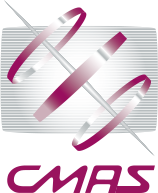Applied Research
In February 2003, Dr. Anvari performed the world’s first hospital-to-hospital telerobotic surgery over a telecommunications network. This surgery and the following 21 cases were part of a research program funded in part by the Canadian Health Information Partnership Program (Canadian Federal Agency) to prove the feasibility of mission critical telehealth applications over commercially available telecommunication networks.
The NEEMO 7 (October 2004) research project successfully evaluated the use of telementoring and telerobotic surgery in the provision of emergency diagnostic and surgical care by a non-physician surgeon in a space analogue environment. The partners in this program were the Canadian Space Agency, NASA and the Telemedicine and Advanced Technology Research Centre (TATRC).
In April of 2006 CMAS, under the direction of Dr. Mehran Anvari, successfully performed NEEMO 9 which was an 18-day mission that built on the lessons learned from NEEMO 7. The primary aim of this study was to evaluate how the human brain adapts to increasing latencies (time delay) experienced during remote control of a robotic platform to complete a variety of complex telerobotic tasks whether surgical or other. In addition, we evaluated the ability to perform a variety of other (complementing NEEMO 7) emergency medical and surgical tasks by non-physicians using telementoring and telerobotic assisting, including anesthesia, radiology, orthopedics and fracture management. We also tested a number of new technologies developed through TATRC and the Defense Advanced Research Projects Agency (DARPA).
Surgical Robotic Platforms
Dr. Anvari, through his past robotic work and research endeavors, recognized that a significant investment needed to be made in the surgical robotic field in order to overcome some of the disadvantages of the currently available technology.
Dr. Anvari and his team developed an Image-Guided Automated Robot (IGAR) that is capable of targeting a variety of interventional tools to small lesions inside the body using real time coordinates obtained from a variety of imaging modalities. The first application of IGAR is a fully automated MRI-guided biopsy of lesions in the breast. IGAR-Breast is capable of automated anesthetic injection, biopsy tool insertion, and biopsy tool roll. Future applications will include multiple imaging modalities for treatment of various organs and diseases.
The commercialization of these innovative technologies will allow Canada to participate in an expanding market resulting new employment and economic opportunities.
